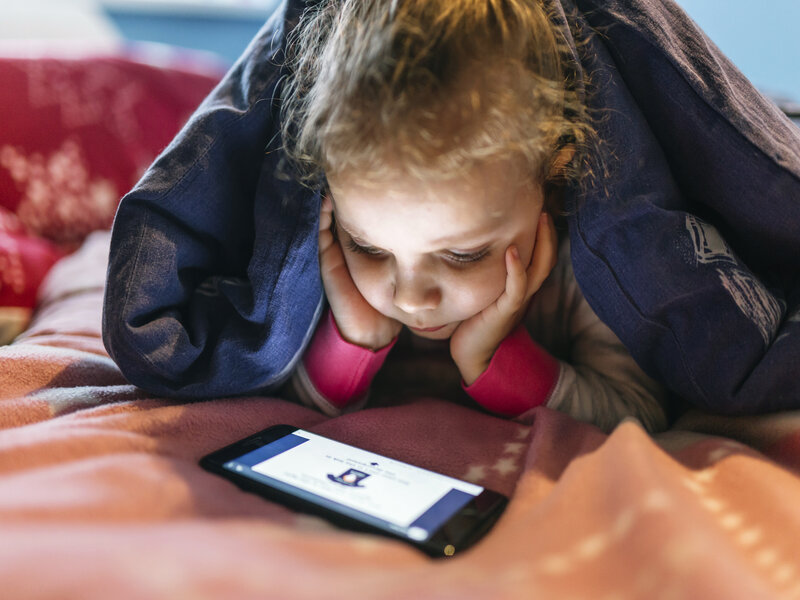Playground or Smartphones: Which Can Help Play a Significant Role in Your Child’s Future?
“The notion that not giving your kids—even very young ones—the most
advanced technology puts them as a disadvantage…” concerns many parents and
Naomi Schaefer Riley, a mother of 3 children and former New York Post and Wall Street Journal writer, questions
this common place idea.
In her book,
Be the Parent, Please: Stop Banning Seesaws and Start Banning Snapchat;
Strategies for Solving the REAL Parenting Problems
, Riley explores the positives, negatives, and the reasons behind the use
of technology to help parents raise their children.
For parents trying to raise children in this high-tech and ever-evolving
world, it is difficult to determine what are the best ways for raising
smart, independent, and successful children.
Lack of Knowledge and a Desire to Help Our Children
For most parents, using technology with children seems natural. Technology
is everywhere and constantly changing the way in which things are done. In
order to keep up with it, parents, teenagers, children and even infants are
using it. However, technology is an uncharted realm where the consequences
of frequent and constant use are uncertain and unnerving for many parents.
Many of them introduce technology to their children at a young age so they
may be able to master it for the workforce. Parents use learning videos and
games for infants and toddlers, so they can start learning early on and be
prepared not only for elementary school but life as an adult. They,
however, hesitate to use technology with children because technology is a
“large uncontrolled experiment” (p. 57). Unlike the research done to prove
the effects of children spending time outside, there is little to no
research explaining the effects of technology on children. This causes some
anxiety in parents because they are therefore uncertain whether they
are hurting or helping their child through the early use of technology.
Riley highlights that educational videos and other forms of technology can
help children,
but research shows that it must not replace parental interaction and
instruction.
Studies show that, without parental interaction and monitoring, sitting
children in front of Sesame Street, interactive toys, or iPads do
not stimulate the growth in learning as much as when a parent discusses the
information with their child.
Why Parents Give Their Children Technology So Young
The author breaks down each of the reasons why parents end up giving into
the pressure of using technology in different forms with their children.
Whether it be to keep them up-to-date with modern technology so they are
not behind their peers, to distract them or keep them occupied while
parents rest or complete a task, or to start educating children at a young
age, parents see technology as an unavoidable part of 21st
century parenting. It becomes even tougher to refuse children technology
once parents realize “the only thing standing between kids and their
immediate gratification is their parents” (p. 29).
The other main reason is the ability to communicate between parents,
children, and their peers. Giving children cellphones allows parents access
to them more readily and efficiently. Despite the uncertainty parents face
about technology and their children, giving their children a cellphone is
less unnerving. For many parents, it is an easy decision to provide their
9-,10-, or 11-year-old with a cellphone for safety reasons and more
difficult to deny cellphones as a means of their children communicating
with their friends.
Hard to Be a Parent When Technology Tries to Parent Children
With children getting phones and tablets younger and technology rapidly
evolving, parents find parenting their children more difficult because they
cannot control technology. Parents cannot help their children keep their
lives in perspective due to the overwhelming bombardment of technology.
When comparing their teenage and young adult life to their children, many
parents feel an enormous void and feel they lack the ability to understand
the issues technology has introduced to modern teens. As one mother stated,
“We did stupid things…it wasn’t on your permanent footprint for the rest of
your life” (103). This lasting effect due to technology has heightened
teens’ insecurities and reactions to different events in life, such as
embarrassment, boredom, and regret. Parents find it hard to help their
children work through these natural moments because their children are
constantly bombarded with messages from their peers, media influencers, and
other opinions. Thus, parents must battle the overwhelming presence of
technology to reach their children and the parental message is often
overshadowed by the messages found on social media.
Overall/Conclusion
This book is a wake-up call for parents, teachers, and all involved in the
care of children: Think for a moment of the burden technology puts on your
mission as an educator and try to look for sound criteria to solve the
problems children are facing without being aware of them. Riley offers
helpful tips for cutting back on the use of technology in addition to using
real-life examples of the effects of technology on parenting from people in
various stages of life, number of children, and geographical location. This
enables the reader to connect to one or multiple examples in the book.
Riley reminds parents that they cannot use technology as a means of raising
their children. Technology is not just a mere tool: it can
hinder the independence and growth of children.














